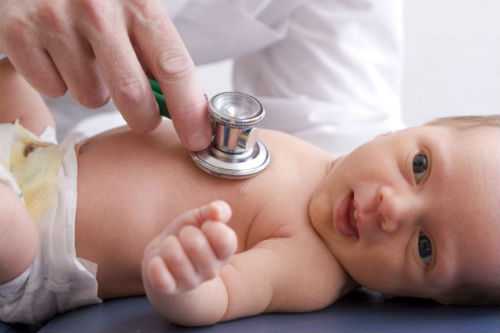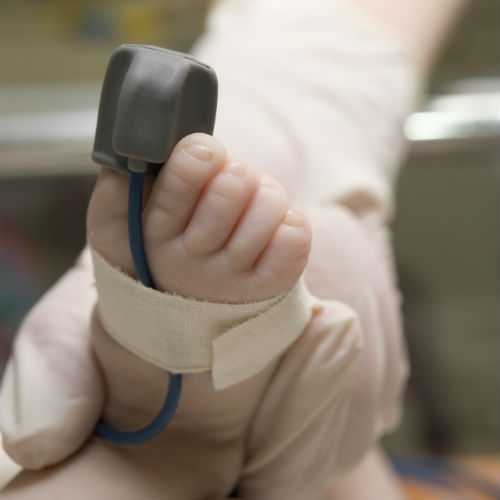Key Findings: Newborn Screening for Critical Congenital Heart Defects Now Common Throughout United States
Share with Your Friends

Screening for critical congenital heart defects (critical CHD) is common throughout the U.S. In a new report, CDC researchers and partners reviewed the overall effects of critical CHD screening and lessons learned from it. Read More
In 2011, newborn screening for critical congenital heart defects (critical CHDs) was added to the United States Recommended Uniform Screening Panel. By 2015, 46 states and Washington, D.C. included critical CHDs in their newborn screening programs. In a new report in the journal, Pediatrics, CDC researchers and partners reviewed the overall effects of critical CHD screening, including costs and health outcomes (cost-effectiveness) of performing screenings, challenges at the state level for screening, and implementing screening in special settings. You can read the abstract here.
Main Findings
- Critical CHD screening is now done in nearly every state.
- Before 2011, it had not been clearly defined which of the critical CHDs should be included in newborn screening. Now, all 12 of the most common types of critical CHDs, as well as some of the other less common critical CHDs are included for screening.
- Critical CHD screening can improve the lives of children by detecting a critical CHD before a baby shows symptoms. See the table below for a list of conditions that are detected using critical CHD screening.
- Critical CHD screening also helps detect conditions other than critical CHDs that may not otherwise have been identified, such as an infection. Identification of conditions other than critical CHDs increases the public health impact of critical CHD screening.
- Improvements in critical CHD screening guidelines and implementation are needed, especially for neonatal intensive care units, babies born outside of hospitals, and regions of the country at high altitude. Babies born at higher altitude typically have lower levels of oxygen in their blood than babies born at sea level, so screening protocols may be different in areas at higher altitude than in areas at sea level.
Conditions detected from newborn screening for critical CHDs using pulse oximetry
-
Critical CHDs
- Coarctation of the aorta
- Double outlet right ventricle
- Ebsteain anomaly
- Hypoplastic left heart syndrome
- Interrupted aortic arch
- Pulmonary atresia
- Single ventricle
- Tetralogy of Fallot
- Total anomalous pulmonary venous return
- d-Transposition of the great arteries
- Tricuspid artresia
- Truncus ateriosus
- Other critical CHDs requiring treatment in the first year of life
-
Other Conditions that are not critical CHDs
- Hemoglobinopathy
- Hypothermia
- Infection, including sepsis
- Lung disease (congenital or acquired)
- Non-critical congenital heart defect
- Persistent pulmonary hypertension
- Other hypoxic conditions not otherwise specified
About this Report

- In 2011, the Secretary of Health and Human Services recommended that critical CHDs be added to the U.S. Recommended Uniform Screening Panel for newborns. This new report in the journal, Pediatrics, looked at the overall effectiveness of adding critical CHDs to newborn screening, including
- Identifying the types of critical CHDs for screening,
- Discussing state-level challenges to implementing the screening of all babies in the state, and tracking babies identified with critical CHDs,
- Performing screening using the proper equipment and in a cost-effective manner, and
- Implementing screening in special settings such as in the neonatal intensive care unit, within out-of-hospital settings, and in areas at high altitude.
CDC Activities
CDC is working to understand more about the causes and health impact of congenital heart defects with the following activities:
-
Surveillance or disease tracking:
- Infants and children: CDC funds and coordinates the Metropolitan Atlanta Congenital Defects Program (MACDP). CDC also funds 14 population-based state tracking programs. Birth defects tracking systems are vital to help us find out where and when birth defects occur and whom they affect.
- Adolescents and adults: CDC recently started three projects to track adolescents and adults with congenital heart defects in order to learn about their health issues and needs across the lifespan.
- Research: CDC funds the Centers for Birth Defects Research and Prevention, which collaborate on large studies such as the National Birth Defects Prevention Study, or NBDPS (births 1997-2011) and the Birth Defects Study To Evaluate Pregnancy exposureS, or BD-STEPS (began with births in 2014). These studies are working to identify factors that put babies at risk for birth defects, including heart defects.
- Collaboration: CDC provides technical assistance to the Congenital Heart Public Health Consortium, a unique collaboration that brings together families, experts, and organizations to address congenital heart defects.
More Information
To learn more about congenital heart defects, please visit https://www.cdc.gov/heartdefects/.
To learn more about newborn screening for critical congenital heart defects, please visit https://www.cdc.gov/ncbddd/heartdefects/cchd-facts.html and https://www.cdc.gov/ncbddd/heartdefects/screening.html.
To learn more about the potential impact and the costs and health outcomes (cost-effectiveness) of newborn screening for critical congenital heart defects, please visit: https://www.cdc.gov/ncbddd/heartdefects/features/keyfindings-cost-screening-cchd.html.
References
Oster ME, Aucott SW, Glidewell J, Hackell J, Kochilas L, Martin GR, Phillippi J, Pinto NM, Saarinen A, Sontag M, Kemper AR. Lessons Learned from Newborn Screening for Critical Congenital Heart Defects. Pediatrics. 2016. [epub ahead of print].
- Page last reviewed: April 15, 2016
- Page last updated: April 15, 2016
- Content source:


 ShareCompartir
ShareCompartir